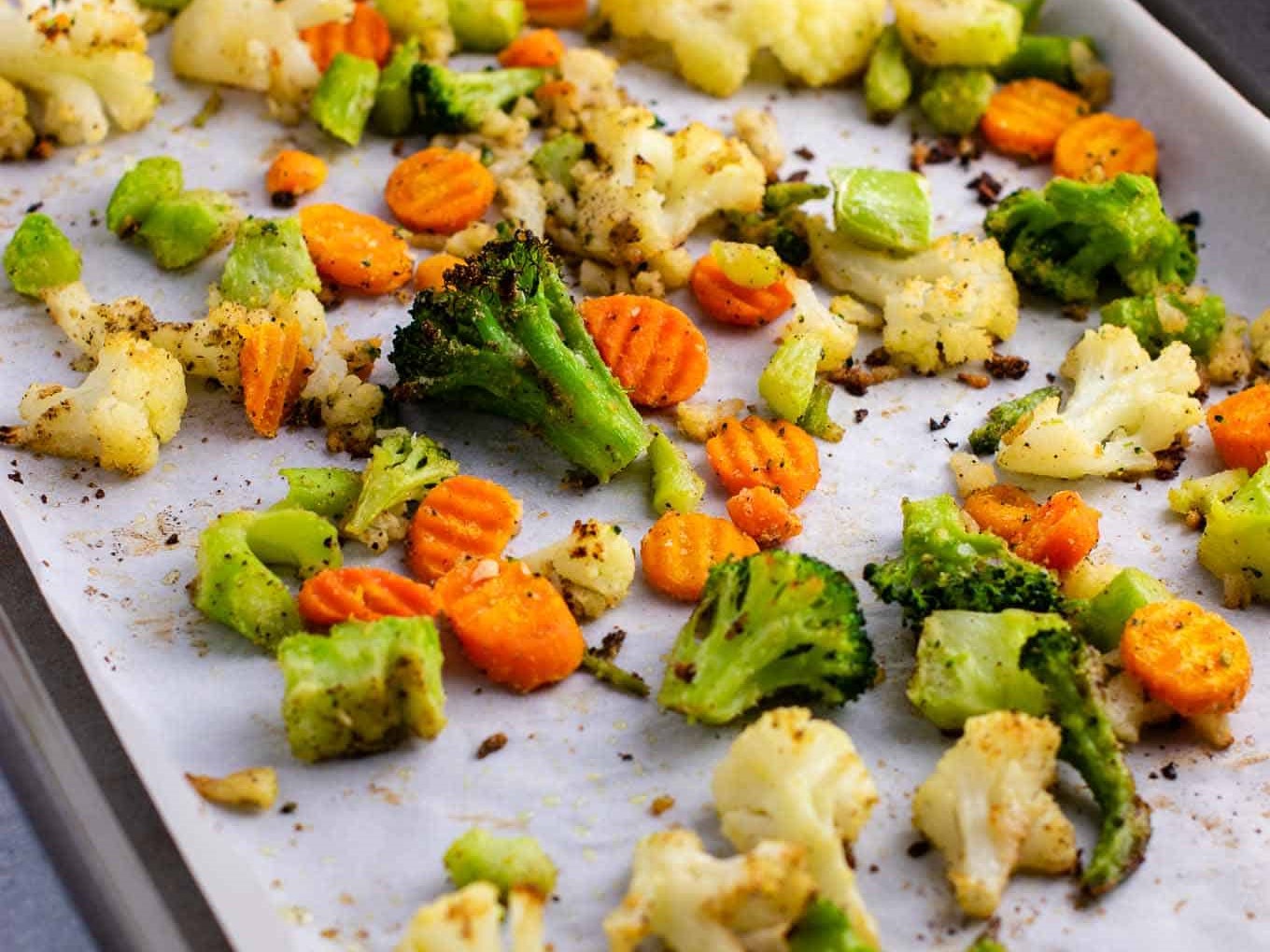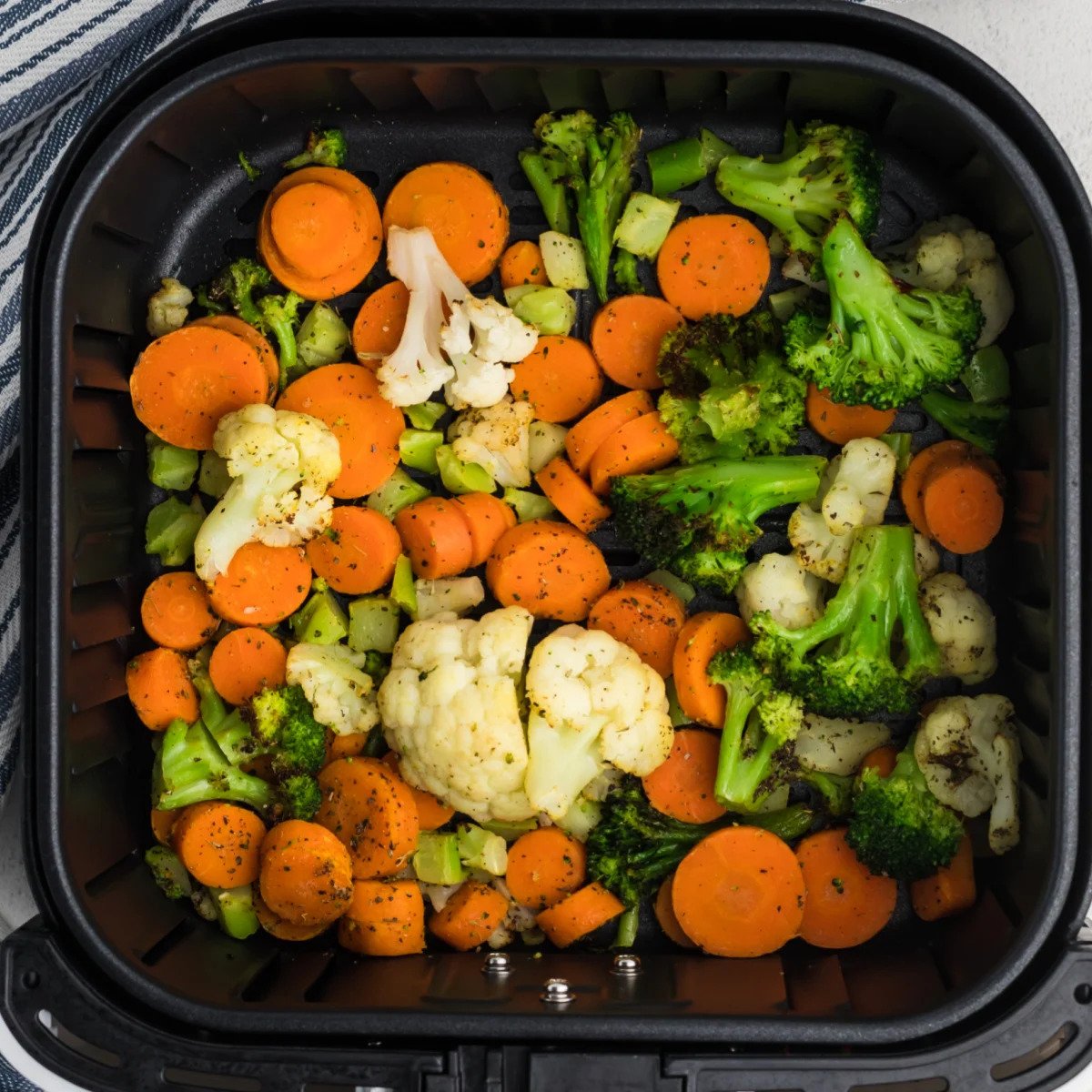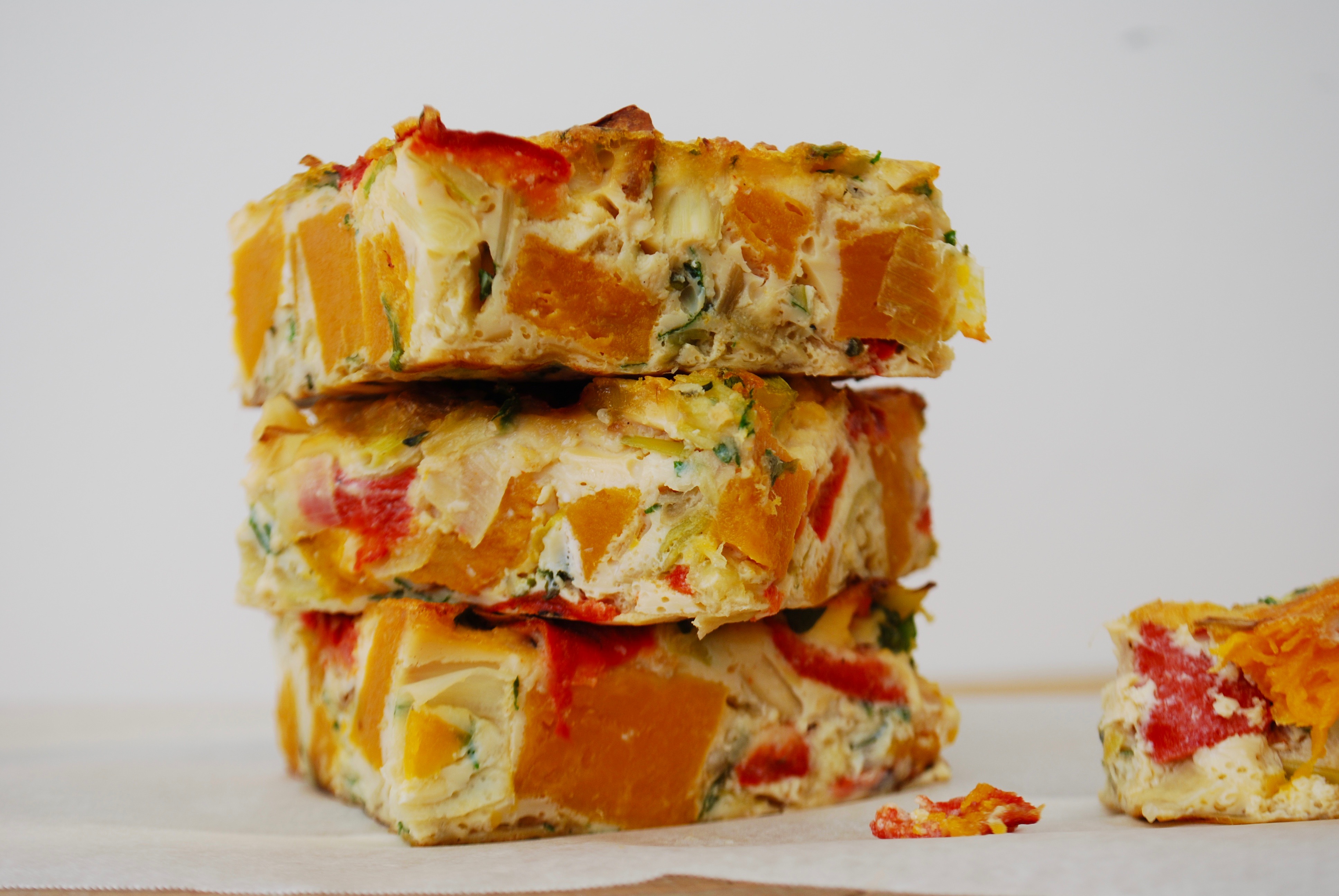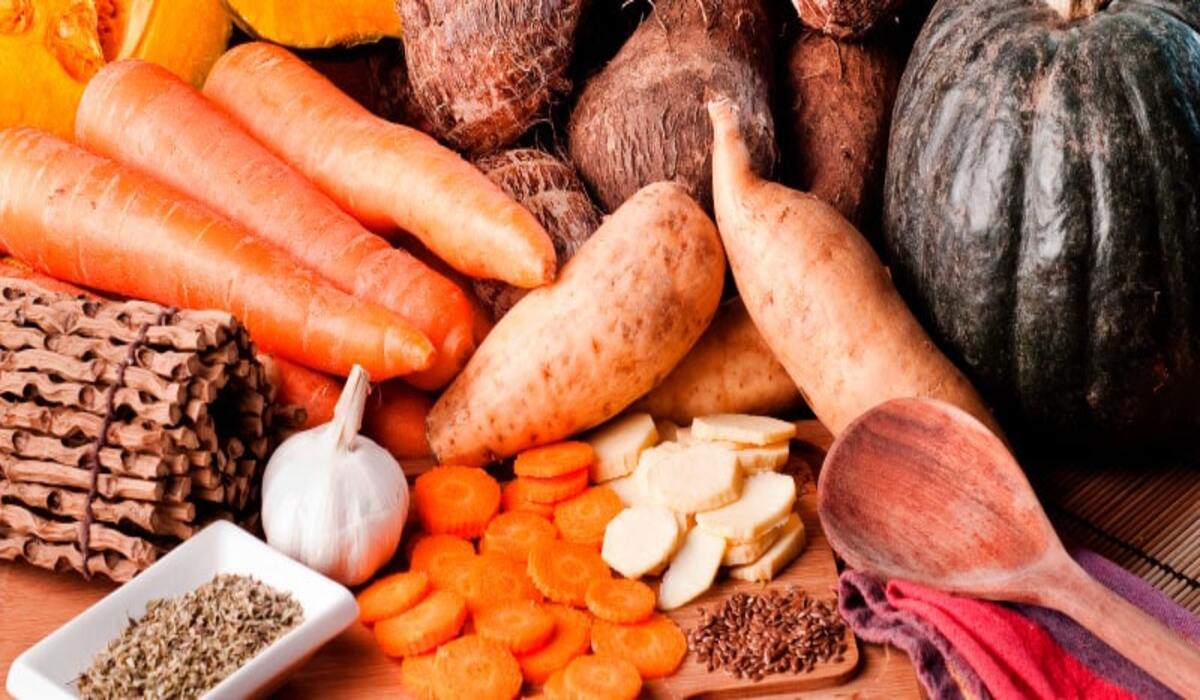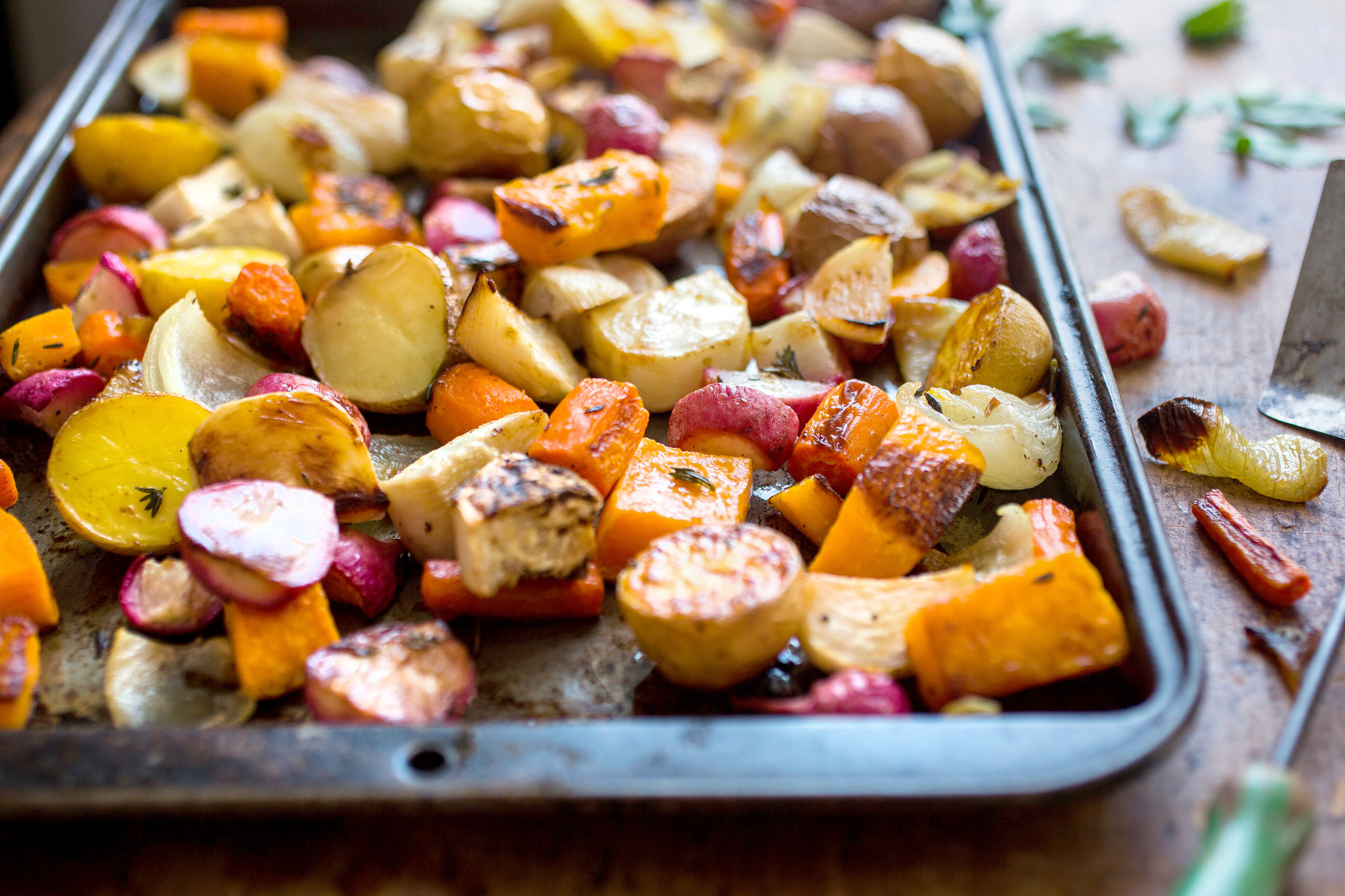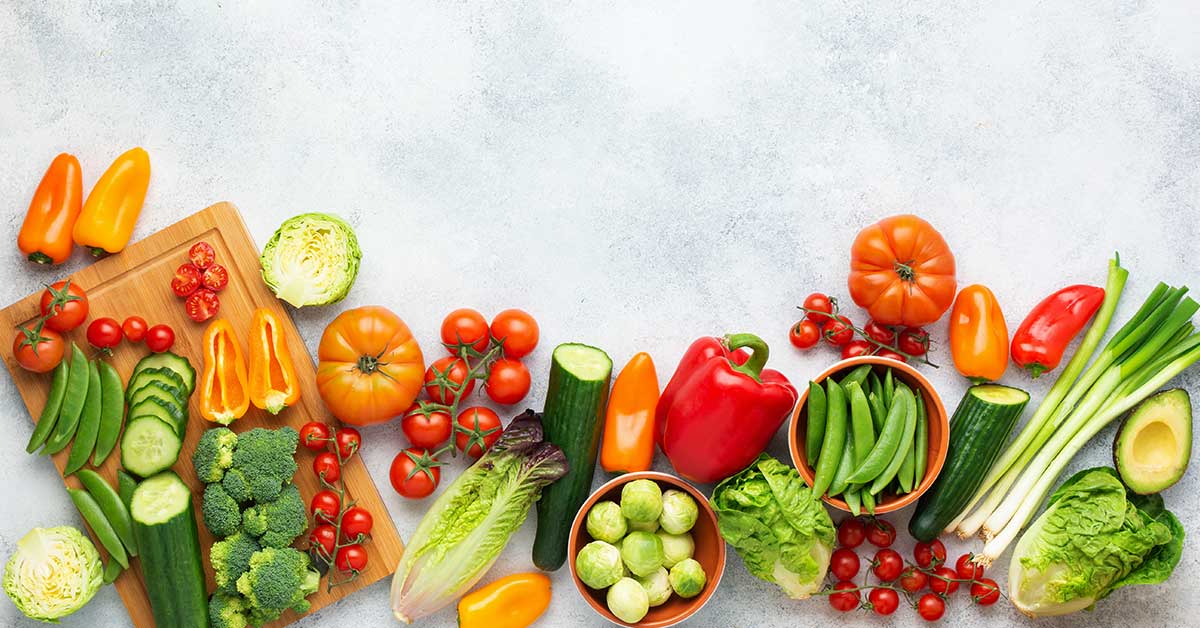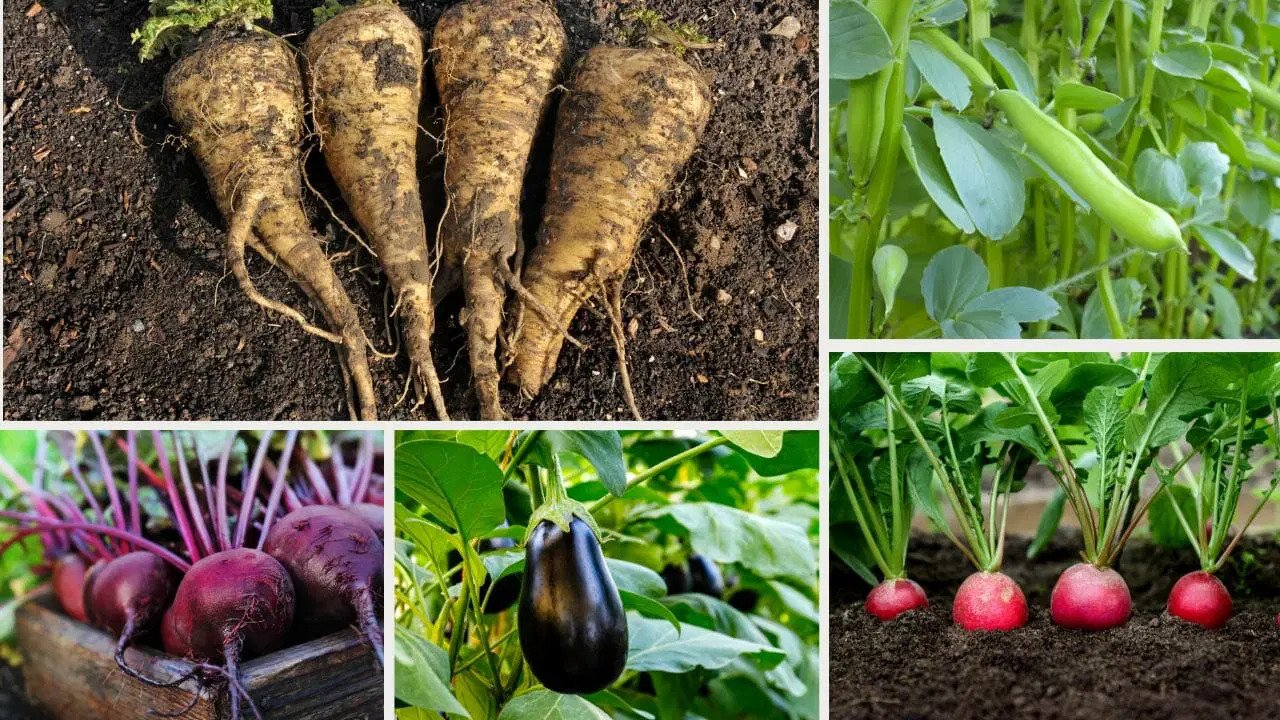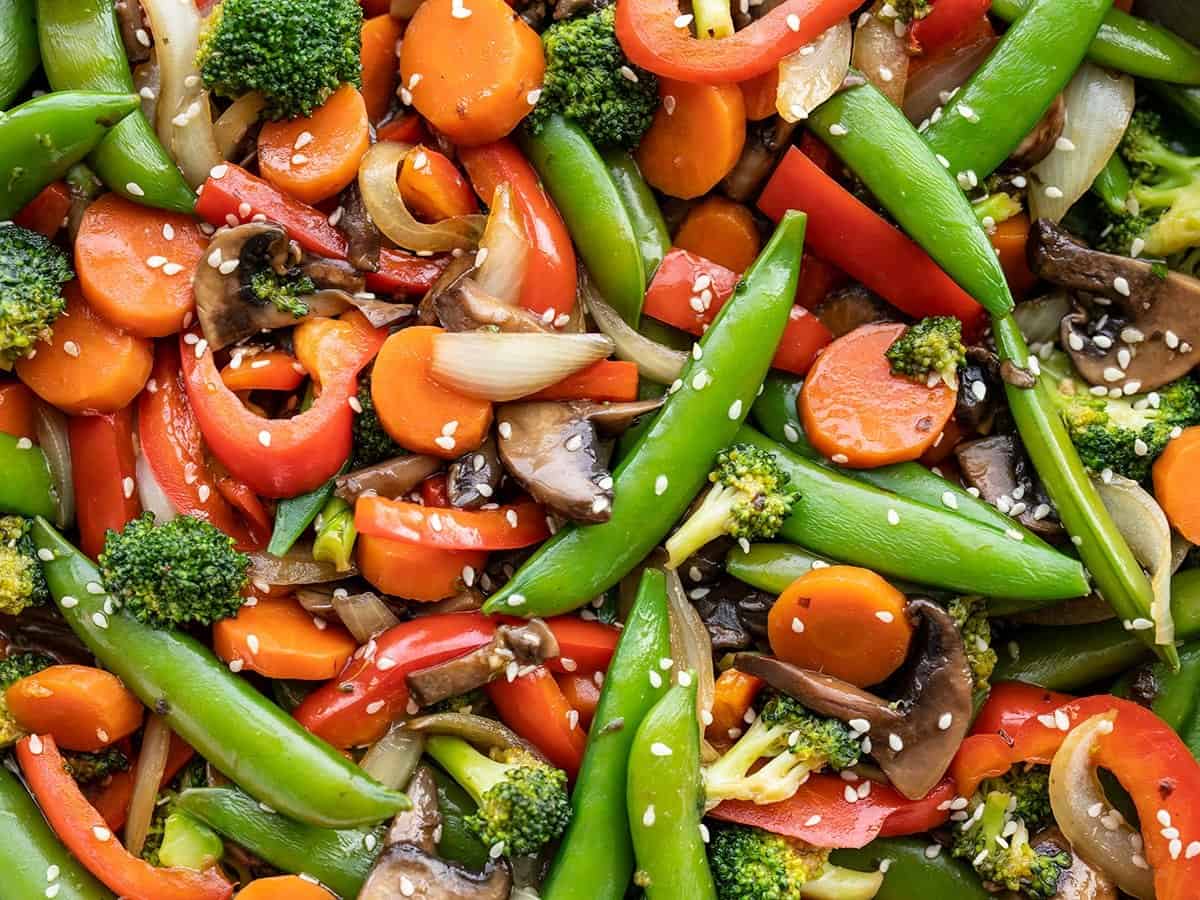Home>Gardening News and Trends>Latest News>What To Do With Frozen Vegetables
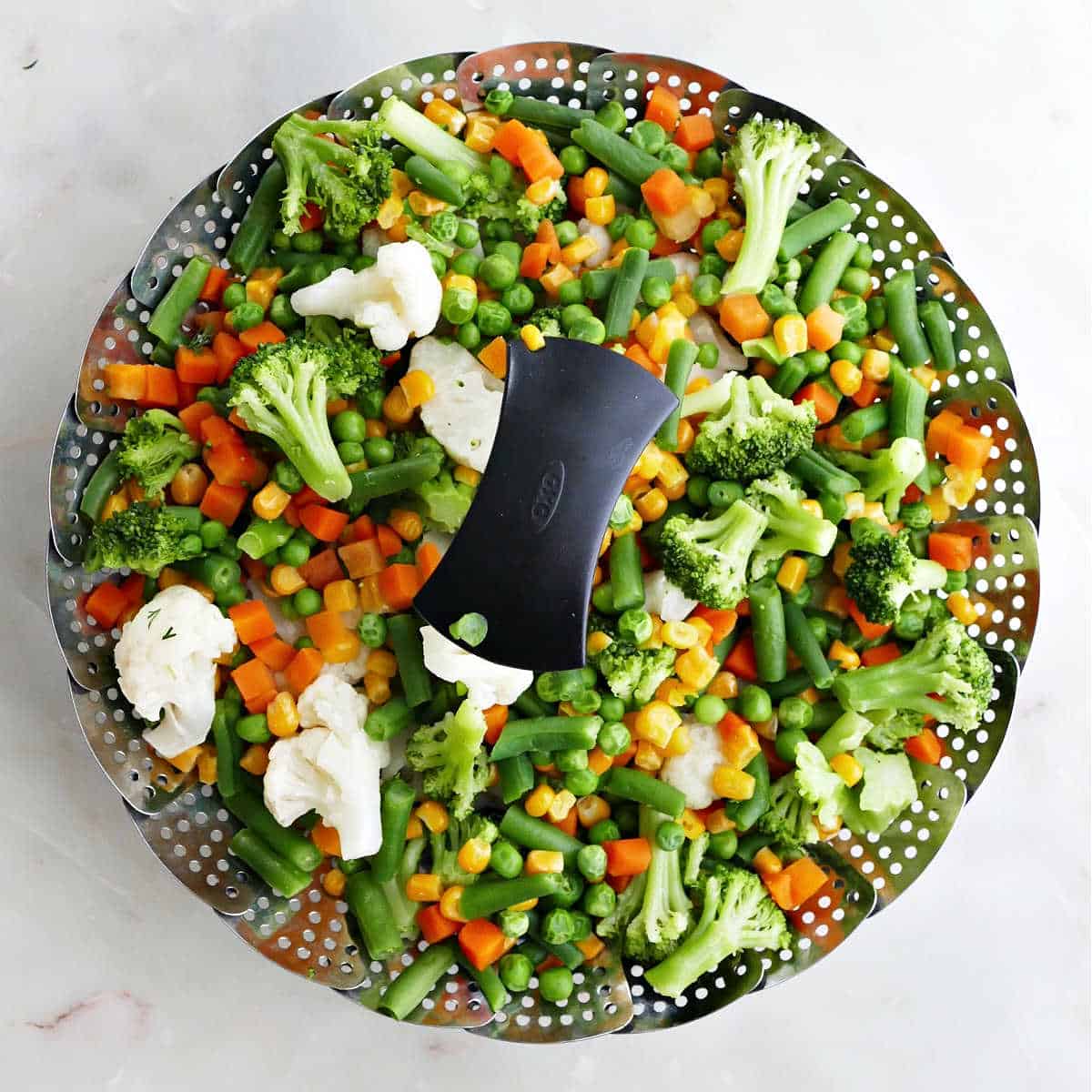

Latest News
What To Do With Frozen Vegetables
Modified: January 22, 2024
Looking for the latest news on what to do with frozen vegetables? Discover helpful tips and delicious recipes to make the most of your frozen veggies.
(Many of the links in this article redirect to a specific reviewed product. Your purchase of these products through affiliate links helps to generate commission for Chicagolandgardening.com, at no extra cost. Learn more)
Table of Contents
Introduction
Frozen vegetables have become a staple in many households, offering a convenient and cost-effective way to incorporate nutritious ingredients into our daily meals. From peas and carrots to broccoli and Brussels sprouts, frozen vegetables offer a wide variety of options that can be easily stored and used whenever needed. Whether you’re a seasoned cook or just starting out in the kitchen, frozen vegetables can be a valuable addition to your culinary arsenal.
In today’s fast-paced world, we often find ourselves juggling multiple responsibilities, leaving us with limited time for meal preparation. This is where frozen vegetables shine. They eliminate the need for time-consuming tasks such as washing, peeling, and chopping, as they come pre-prepared and ready to use. With busy schedules and hectic lifestyles, having a bag of frozen vegetables in the freezer can save you valuable time and make meal planning a breeze.
Another advantage of frozen vegetables is their extended shelf life. Unlike fresh produce that may go bad after a few days, freezing vegetables helps to preserve their nutrients and quality for a much longer period. This means less waste and the ability to keep a variety of vegetables on hand without worrying about spoilage. Additionally, frozen vegetables are picked at their peak ripeness and flash-frozen, locking in their nutritional value and ensuring that they retain their flavor and texture.
For those on a budget, frozen vegetables offer an affordable alternative to fresh counterparts. They are often more reasonably priced, especially when certain vegetables are out of season or are not locally grown. Instead of compromising on your nutritional intake or spending extra money, you can rely on frozen vegetables to provide you with essential vitamins, minerals, and fiber all year round.
In the following sections, we will delve into the benefits of frozen vegetables, explore the freezing process, provide tips on proper storage, discuss various cooking methods, and offer creative ideas to incorporate frozen vegetables into your favorite recipes. Whether you’re looking to simply add some color to your plate or enhance the nutritional value of your meals, frozen vegetables can be an excellent solution. Let’s dive in and discover the endless possibilities of these freezer-friendly gems!
Benefits of Frozen Vegetables
There are numerous benefits to incorporating frozen vegetables into your diet. Here are a few reasons why you should consider adding these convenient and nutritious options to your meals:
- Year-Round Availability: One of the major advantages of frozen vegetables is that they are available all year round. Unlike fresh produce that is subject to seasonal availability and fluctuating prices, frozen vegetables can be purchased and enjoyed at any time, allowing you to maintain a varied and balanced diet regardless of the season.
- Preserved Nutritional Value: Frozen vegetables are harvested at their peak ripeness, which is when they are packed with the highest concentration of nutrients. These vegetables are then quickly frozen, locking in their vitamins, minerals, and antioxidants. This means that you can still obtain a significant portion of the nutritional benefits found in fresh vegetables, even during the off-season.
- Convenience and Time-Saving: Frozen vegetables eliminate the need for time-consuming peeling, chopping, and cleaning. They are pre-cut and ready to use, saving you precious minutes in the kitchen. Whether you are a busy professional, a parent juggling multiple responsibilities, or simply someone looking for quick and easy meal options, frozen vegetables can be a lifesaver.
- Reduced Waste: How often have you bought fresh produce with the intention of using it, only to find it spoiled before you had the chance? By opting for frozen vegetables, you can significantly reduce food waste. With their extended shelf life, you can buy in bulk, using only what you need and keeping the rest for later. This not only saves money but also helps reduce the environmental impact associated with food waste.
- Cost-Effective: Frozen vegetables are often more affordable than their fresh counterparts, especially when certain vegetables are out of season or not locally grown. Incorporating frozen vegetables into your meals allows you to enjoy a wide variety of nutrient-packed options without breaking the bank.
- Diverse Selection: The variety of frozen vegetables available is extensive, ranging from common favorites like peas, corn, and spinach to more specialized options like edamame and artichoke hearts. This diverse selection allows you to experiment with different flavors and textures in your recipes, adding excitement and nutritional value to your meals.
Incorporating frozen vegetables into your diet not only adds convenience and flexibility but also helps improve your overall nutritional intake. Whether you are looking to boost your vitamin and mineral consumption, increase fiber intake, or simply enjoy the taste and texture of different vegetables, frozen options provide an accessible and affordable solution. By understanding the benefits of frozen vegetables, you can make informed choices about incorporating them into your daily meals and reap the rewards of these freezer-friendly gems.
Understanding the Freezing Process
The freezing process is a crucial step in preserving the quality, flavor, and nutritional value of vegetables. Understanding how freezing works can help you make the most of your frozen vegetables. Here are the key aspects of the freezing process:
Rapid Freezing: Frozen vegetables are typically flash-frozen, a process in which vegetables are exposed to extremely cold temperatures in a short amount of time. This rapid freezing prevents the formation of large ice crystals, which can damage the cell structure and lead to a loss of texture and taste. By freezing vegetables quickly, their original quality and nutritional value are better preserved.
Vacuum Sealing or Packaging: After being rapidly frozen, vegetables are often vacuum-sealed or packaged in airtight bags. This helps to protect the vegetables from freezer burn, which can occur when air comes into contact with the food. Proper packaging ensures that the vegetables remain fresh and retain their flavor and texture for an extended period.
Temperature Control: Maintaining a consistently low temperature is crucial for preserving the quality of frozen vegetables. It is recommended to store frozen vegetables at a temperature of 0°F (-18°C) or below. This ensures that the vegetables remain frozen and prevents the growth of harmful bacteria and pathogens.
Quality Standards: The frozen vegetable industry adheres to strict quality standards to ensure the safety and integrity of their products. Vegetables are carefully selected and processed to meet these standards before being packaged and made available for consumers. Quality control measures include testing for pesticides, monitoring for bacterial contamination, and ensuring accurate labeling of ingredients.
By understanding the freezing process, you can make informed decisions when purchasing and storing frozen vegetables. It is important to choose reputable brands that prioritize the quality and freshness of their products. When thawing frozen vegetables, it is best to follow the instructions provided on the packaging, whether that be thawing in the refrigerator or using gentle heat to cook them directly from frozen.
Remember, proper handling and storage of frozen vegetables are essential to maintain their quality. Avoid refreezing thawed vegetables as this can affect their taste and texture. Always check the expiration dates and discard any packages that show signs of frostbite or damage.
Now that you have a better understanding of the freezing process, you can appreciate the efforts that go into producing high-quality frozen vegetables and make the most of their convenience and nutritional value in your everyday cooking.
Proper Storage of Frozen Vegetables
Proper storage of frozen vegetables is crucial to maintain their quality, flavor, and nutritional value. Here are a few guidelines to ensure you keep your frozen vegetables in optimal condition:
1. Maintain a Consistent Temperature: Store your frozen vegetables at a temperature of 0°F (or -18°C) or below. A consistent and low temperature is essential for preserving the nutrients and preventing the growth of harmful bacteria.
2. Use Airtight Packaging: When purchasing frozen vegetables, ensure that the packaging is intact and airtight. If the package is damaged or has been opened, the vegetables may have been exposed to air, leading to potential freezer burn and a loss of quality.
3. Arrange for Proper Air Circulation: Allow enough space between the packages of frozen vegetables in your freezer to promote proper air circulation. This helps maintain a consistent temperature and prevents the formation of ice crystals.
4. Avoid Freezer Burn: Freezer burn occurs when moisture evaporates from the frozen food and forms ice crystals on its surface. To prevent freezer burn, make sure that the packaging is tightly sealed and free from air. If you notice any signs of freezer burn, such as discoloration or a dry texture, it is best to discard the affected vegetables.
5. Follow the “First In, First Out” Rule: It is good practice to use the “first in, first out” rule when consuming frozen vegetables. This means using the oldest packages of vegetables before opening newer ones to ensure that they are used within their recommended storage timeframe and maintain their optimal quality.
6. Avoid Excessive Thawing and Refreezing: Thawing and refreezing frozen vegetables repeatedly can affect their texture and taste. It is best to thaw only the amount of vegetables you need for a particular meal and avoid refreezing any leftovers. Thawing in the refrigerator is the recommended method to preserve the quality and safety of the vegetables.
7. Keep an Eye on Expiration Dates: Check the expiration dates on the packaging and use the frozen vegetables before they expire. While frozen vegetables can still be safe to eat past their expiration dates, the quality and taste may deteriorate over time.
By following these guidelines, you can ensure that your frozen vegetables stay fresh and delicious for an extended period. Proper storage practices not only maintain the nutritional value but also help reduce food waste, allowing you to enjoy the convenience and benefits of frozen vegetables to the fullest extent.
Cooking Methods for Frozen Vegetables
Cooking frozen vegetables is simple and versatile, offering a wide range of options to suit different tastes and preferences. Here are some popular cooking methods for frozen vegetables:
- Steaming: Steaming is a gentle cooking method that helps retain the nutrients and natural flavors of frozen vegetables. Simply place the desired amount of frozen vegetables in a steamer basket over boiling water and cover. Steam for a few minutes until the vegetables are tender but still crisp. Steamed frozen vegetables can be enjoyed as a side dish or incorporated into stir-fries, salads, or pasta dishes.
- Sautéing: Sautéing frozen vegetables adds a delicious caramelized flavor and texture. Heat a small amount of oil or butter in a skillet over medium heat, then add the frozen vegetables. Stir frequently until they are heated through and lightly browned. Sautéed frozen vegetables can be served as a side dish or used as a flavorful addition to stir-fries, rice dishes, or omelets.
- Oven Roasting: Roasting brings out the natural sweetness of frozen vegetables and adds a delightful crispy texture. Preheat your oven to around 425°F (220°C). Toss the frozen vegetables in olive oil, season with herbs and spices, and spread them out on a baking sheet. Roast, stirring occasionally, until the vegetables are golden and tender. Roasted frozen vegetables make a wonderful side dish or can be used as a topping for pizzas, in wraps, or as a flavorful addition to grain bowls.
- Boiling: Boiling is a quick and convenient method to cook frozen vegetables. Bring a pot of water to boil and add the desired amount of frozen vegetables. Cook until they are tender but still retain their bright color. Drain the vegetables and season to taste. Boiled frozen vegetables can be enjoyed on their own, used in soups, stews, and casseroles, or added to pasta dishes.
- Microwaving: Microwaving is one of the quickest methods to cook frozen vegetables. Place the vegetables in a microwave-safe dish, cover, and microwave on high, stirring occasionally, until they are cooked through. Be careful not to overcook, as this can lead to a mushy texture. Microwaved frozen vegetables can be enjoyed as a simple side dish or incorporated into various recipes.
Experimenting with different cooking methods allows you to explore the variety of flavors and textures that frozen vegetables have to offer. Don’t be afraid to get creative and incorporate them into your favorite recipes to enhance the nutritional value and visual appeal of your meals. Frozen vegetables provide a convenient and nutritious option for adding vibrant colors and fresh flavors to your culinary creations.
Incorporating Frozen Vegetables into Recipes
Frozen vegetables are incredibly versatile and can be incorporated into a wide variety of recipes to add flavor, nutrition, and vibrant colors. Here are some creative ideas for using frozen vegetables in your favorite dishes:
- Pasta Dishes: Add a pop of color and texture to your pasta dishes by tossing in a handful of frozen vegetables. Whether it’s peas and carrots in a creamy Alfredo sauce or mixed vegetables in a vibrant tomato sauce, frozen vegetables can bring added nutrition and a burst of flavor to your pasta creations.
- Stir-Fries: Stir-fries are a perfect canvas for adding frozen vegetables. They can be added directly from the freezer and quickly cooked with your choice of protein and sauce. The quick cooking time ensures that the frozen vegetables retain their crispness and color while providing a healthy and flavorful addition to your stir-fry.
- Soups and Stews: Frozen vegetables are a convenient addition to soups and stews, adding depth of flavor and a boost of nutrients. Whether it’s a classic vegetable soup or a hearty beef stew, frozen vegetables can be thrown in with other ingredients to create a wholesome and satisfying meal.
- Smoothies: While frozen fruits are commonly used in smoothies, frozen vegetables can also be a nutritious addition. Add a handful of frozen spinach, broccoli, or cauliflower to your favorite fruit smoothie for an extra dose of vitamins, minerals, and fiber. You’ll be surprised at how seamlessly the frozen vegetables blend in while contributing to a healthier and more balanced beverage.
- Quiches and Frittatas: Frozen vegetables are a convenient way to enhance the flavor and nutritional value of quiches and frittatas. Whether it’s a classic quiche Lorraine or a vegetable-packed frittata, adding a variety of frozen vegetables such as mushrooms, peppers, or spinach can elevate these dishes to a whole new level.
Don’t limit yourself to these suggestions – feel free to explore and get creative with incorporating frozen vegetables into your favorite recipes. Whether it’s a colorful vegetable medley as a side dish or a main course that highlights the natural flavors of frozen vegetables, the possibilities are endless. By utilizing frozen vegetables, you can add a nutritious and flavorful twist to your meals without compromising on taste or convenience.
Tips for Maximizing the Flavor and Nutrition of Frozen Vegetables
While frozen vegetables are already a convenient and nutritious option, there are several tips and tricks to enhance their flavor and nutritional value. Here are some tips for maximizing the taste and nutrients of your frozen vegetables:
- Seasoning and Spices: Add flavor to your frozen vegetables by using a variety of herbs, spices, and seasonings. Whether it’s a pinch of garlic powder, a sprinkle of dried herbs like thyme or rosemary, or a dash of soy sauce or lemon juice, these additions can significantly enhance the overall taste of your dishes.
- Combine with Fresh Ingredients: Mix frozen vegetables with fresh ingredients to add texture and brightness. For example, combine thawed frozen peas with fresh cherry tomatoes and basil for a refreshing salad, or sauté frozen broccoli with fresh garlic and chili flakes for an irresistible side dish.
- Pair with Protein: Adding protein to your meals can make them more satisfying and nutritious. Pair your frozen vegetables with lean proteins such as grilled chicken, fish, tofu, or beans to create a balanced and wholesome dish. The combination of protein and vegetables provides a spectrum of nutrients and keeps you feeling full for longer.
- Experiment with Texture: Frozen vegetables can have various textures depending on how you cook them. If you prefer a crispier texture, use methods like roasting or sautéing. For a softer and tender texture, boiling or steaming may be your best options. Experiment with different cooking techniques to find your preferred texture for each type of frozen vegetable.
- Combine Different Varieties: Mix and match different varieties of frozen vegetables to create vibrant and nutritious dishes. Combine a blend of carrots, peas, corn, and green beans for a colorful vegetable medley that can be used as a side dish or in stir-fries. The combination of different vegetables adds visual appeal and nutritional diversity to your meals.
- Don’t Overcook: Be mindful not to overcook your frozen vegetables as it can lead to a mushy texture and a loss of nutrients. Follow the cooking instructions provided on the packaging or test for doneness by tasting a piece before removing from heat. Cooking your frozen vegetables until they are just tender ensures that they retain their nutrients and natural flavors.
By following these tips, you can elevate the taste and nutritional quality of your frozen vegetables. These simple additions and cooking techniques can turn a basic side dish into a standout element of your meal. Whether you prefer them as a nutritious side, a main component of a recipe, or a versatile ingredient, frozen vegetables offer endless possibilities to explore and enjoy in your culinary endeavors.
Conclusion
Frozen vegetables are a convenient, versatile, and nutritious option for adding flavor, color, and vital nutrients to your meals. Whether you’re looking to save time in the kitchen, reduce food waste, or maintain a balanced diet throughout the year, frozen vegetables offer a multitude of benefits.
From the moment they are harvested at peak ripeness and flash-frozen to preserve their nutritional value and quality, frozen vegetables are a reliable and accessible source of vitamins, minerals, and fiber. They provide a wide variety of options that can be easily stored and prepared for quick and delicious meals.
Understanding the freezing process, proper storage techniques, and cooking methods ensures that you get the most out of your frozen vegetables. By following the tips and ideas provided, you can maximize the flavor and nutritional value of these freezer-friendly gems as you incorporate them into your favorite recipes.
Whether you’re sautéing them as a side dish, adding them to pastas and stir-fries, or using them as ingredients in soups and casseroles, frozen vegetables offer unlimited opportunities to bring color, texture, and healthiness to your meals. With their long shelf life and convenient packaging, you can always have a nutritious and delicious option at your fingertips, ready to be enjoyed any time of the year.
So, embrace the convenience and benefits of frozen vegetables. Explore the different varieties, experiment with cooking techniques, and let your creativity run wild in the kitchen. By incorporating frozen vegetables into your meal planning, you can maintain a well-rounded and nutritious diet while saving time and reducing food waste.
Make frozen vegetables a staple in your kitchen and discover the endless possibilities they offer. Enjoy the convenience, savor the flavors, and reap the nutritional rewards of including these freezer-friendly gems in your everyday cooking.
